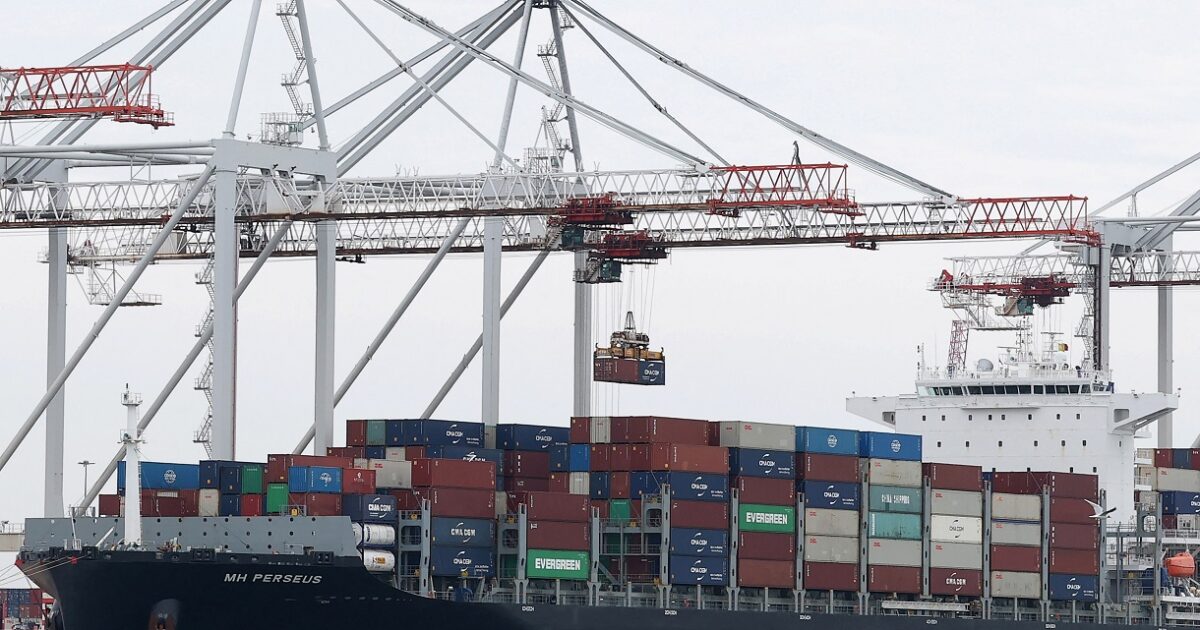The US is planning to start imposing millions of dollars on large Chinese ships approaching their ports, intensifying the trade war between the world’s two largest economies (ed. China and USA).
As China has a leadership in world shipping, much of the trade fleet that carries – over 80% of world trade – will be affected by the changes. Although some exceptions are foreseen, the shipping industry is expected to adjust its activity to reduce financial burdens. The fees are designed to restore the US shipbuilding industry and deal with what Washington calls China’s irrational moves to “dominate the sectors of shipping, supply and shipbuilding”.
However, in order for the US to compete with China in shipping, they have a long way to go, Bloomberg says. Chinese shipbuilding orders recently amounted to 250 million tonnes of dead (DWT), compared to just 200,000 tonnes for the US, according to data from Clarkson Research Services Ltd., a unit of the world’s largest navigator.
What fees will the US charge on ships visiting their ports?
The US Commercial Representative revised the original fee plans, introducing two different charges of charges, depending on a ship’s relationship with China. The first – and stricter – concerns ships that belong to or operate Chinese companies. Since October 14, they face $ 50 per net tonight with the price increasing to $ 140 per tonne in April 2028.
The second charge category applies to Chinese -made ships, which will be charged either with $ 18 per net or $ 120 per unloaded container since October – any of them higher. There are multiple possible exceptions to ships falling on this charge. For both teams of fees, the charge can be imposed up to five times a year, and fees will only be paid once per trip, regardless of the US port approaching a ship.
What are the exceptions?
While the USTR document does not list exceptions from the charges related to Chinese companies and ship owners, there are multiple exemptions for Chinese ships, including:
- Vessels that reach gaps or with ballast
- Vessels with capacity equal to or less than 4,000 equivalent 20 -foot units (TEU), 55,000 dwt or individual bulk cargo capacity of 80,000 dwt
- Vessels entering US port in continental US from a journey of less than 2,000 nautical miles from port or abroad
The US is also offered to suspend boats for up to three years, if ordered and surrendered an American -built ship equivalent or larger pure capacity – although this may not be a serious choice for shipping companies at present, as the US does not have significant shipping capacity. And that could last beyond Trump’s current term to create.
What types of bodies and owners are considered Chinese?
The US Commercial Agency (USTR) uses various criteria to determine whether a shipowner or ship manager is considered a citizen or corporate entity of the People’s Republic of China, Hong Kong or Macao – administratively owned by China. The basic parameters include whether at least 25% of shares, voting rights or positions on the Board of Directors of a company is directly or indirectly owned by some of the governments of China, Hong Kong or Macao. In addition, a company is considered Chinese if it is mainly active in these areas, has its headquarters there or if its parent company is in one of these jurisdictions.
According to Clarkson Research, Chinese ownership or management bodies control 15% of the world fleet fleet, including 32% of bulk carriers, 19% of tanks and 25% of container ships. Chinese ships make up 23% of the world fleet.
What else is on the table?
USTR measures are not just China. Since October 14, all ships that have not been built in the US will be charged $ 150 for each equivalent car unit (CEU) upon entering US ports. The imposition of the fee can be suspended for three years if an American -made ship with an equal or greater CEU capacity has been ordered and surrendered.
At the same time, it is envisaged that a growing percentage of liquefied natural gas exports (LNG) will gradually be required to be transported by ships connected to the US – with the possibility of exemption, on the condition of ordering and delivery of a corresponding US ship. This requirement, however, will not come into force before the spring of 2028. In addition, it is proposed to impose duties on Chinese -based cargo cargo and on relevant load handling equipment.
What does all this mean about shipping and trade?
Although the fees for the affected ships are high, Clarkson Research estimates that the vast majority of ship approaches to US ports will not eventually be subject to burden. Last year’s maritime analysis shows that only 7% of US port visits from ships carried out international trade will fall into the scope of measures – although for car carriers, this percentage would reach 50%.
Shipping involved are expected to adapt to avoid burdens. Chinese shipowners and managers may shift their operations into markets outside the US, while others may replace Chinese ships with alternative boats for their missions to the United States.
However, for ships affected directly, new charges are particularly high. A Chinese -made ship, capacity of 10,000 TEUs, may be charged $ 1.3 million per route in 2026, an amount that could rise to $ 1.9 million in 2028, according to Clarkson Research estimates.
Fees are even greater for boats owned or managed by Chinese companies. If these costs are passed through the supply chain, it is not excluded from boosting inflationary pressures and limiting the demand for imported products in the US.
“The fee status announced by USTR is a step in the wrong direction, as it will raise prices for consumers, weaken US trade and do little to revitalize the US shipping industry,” said Joe Kramek, chairman and chief executive, Regular line of capacity.
